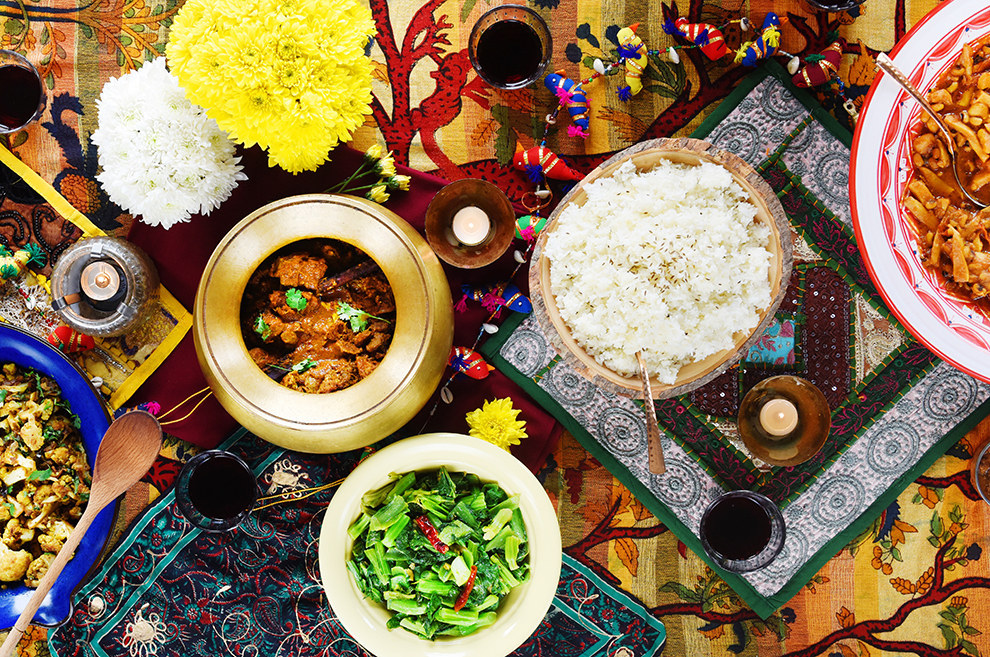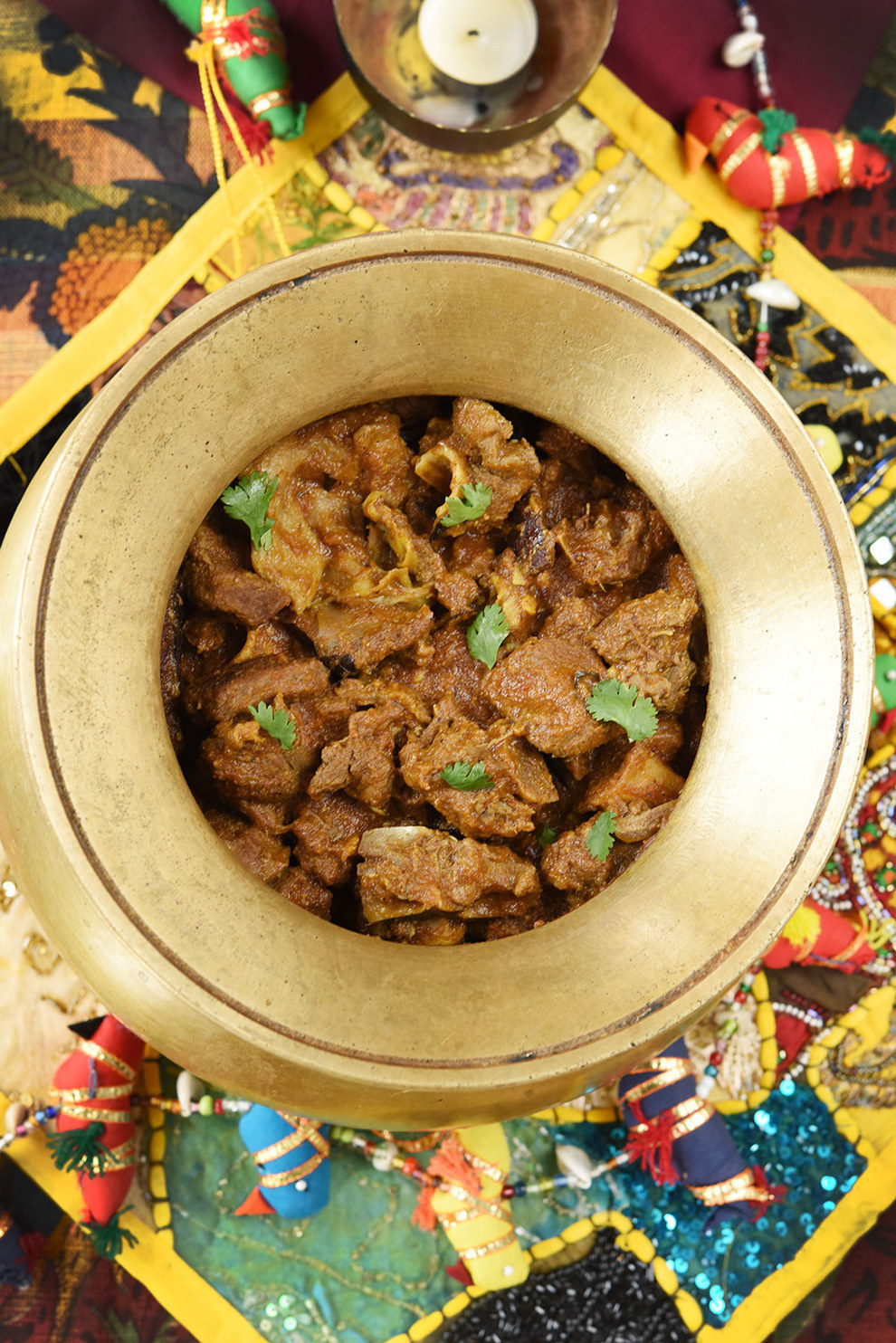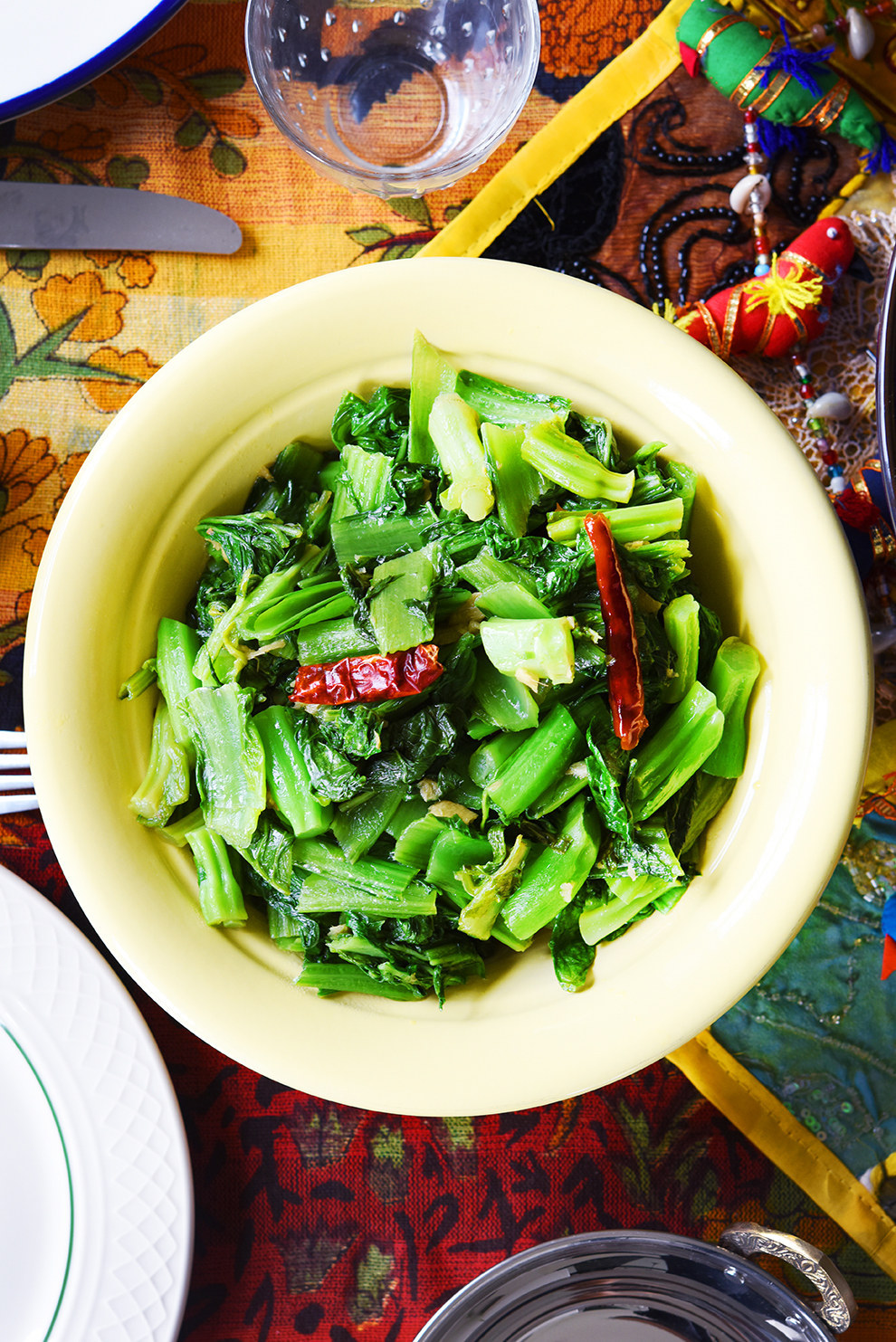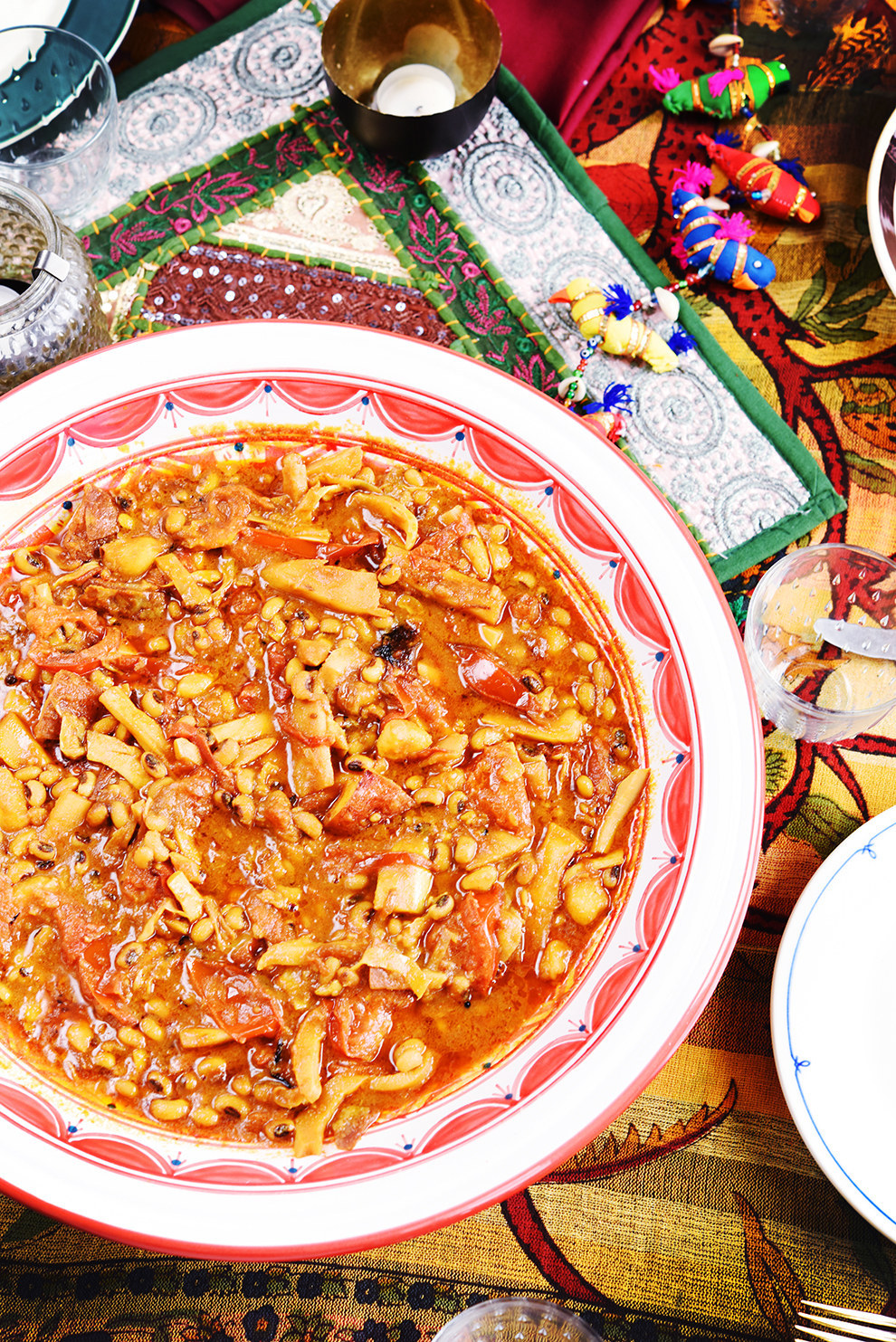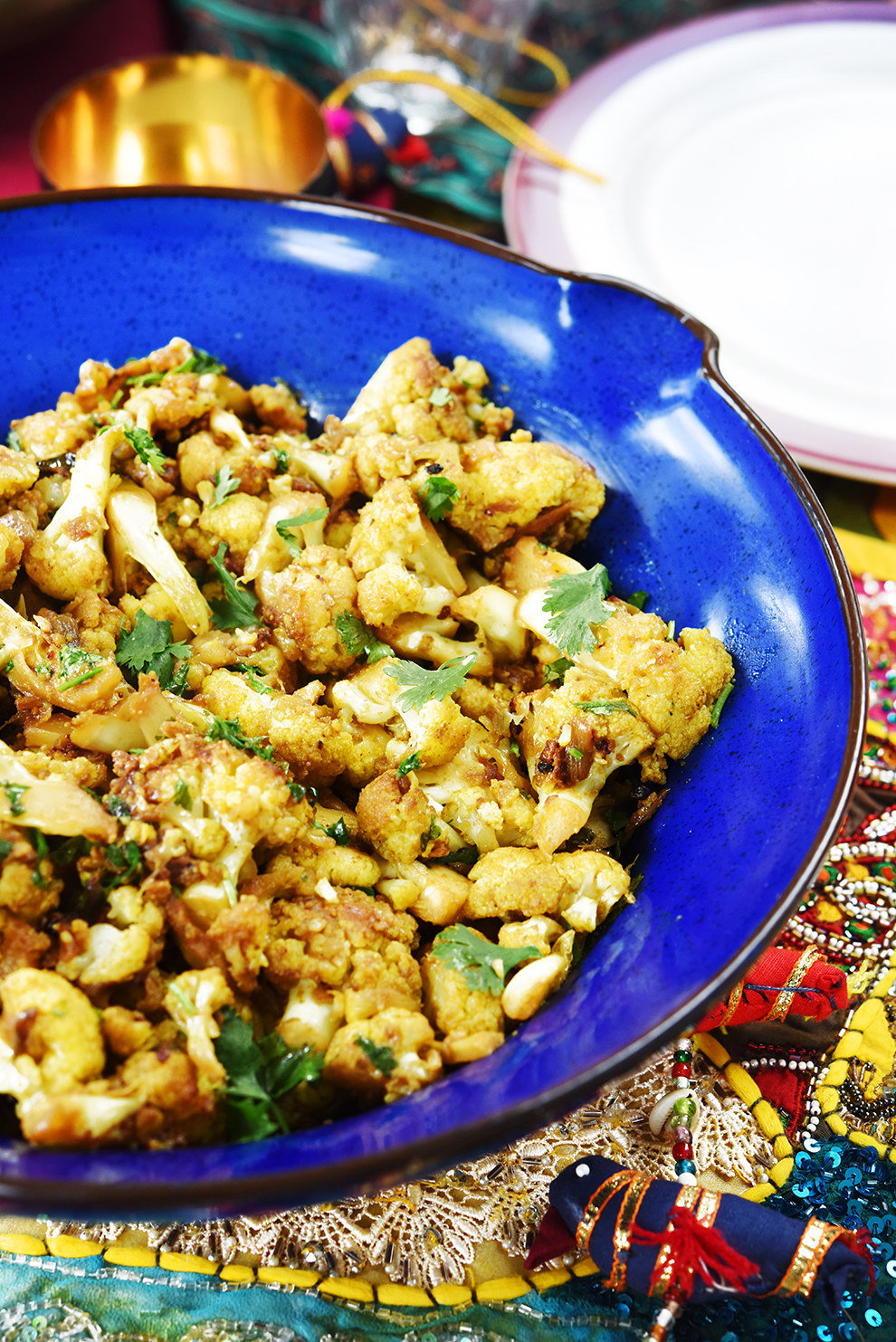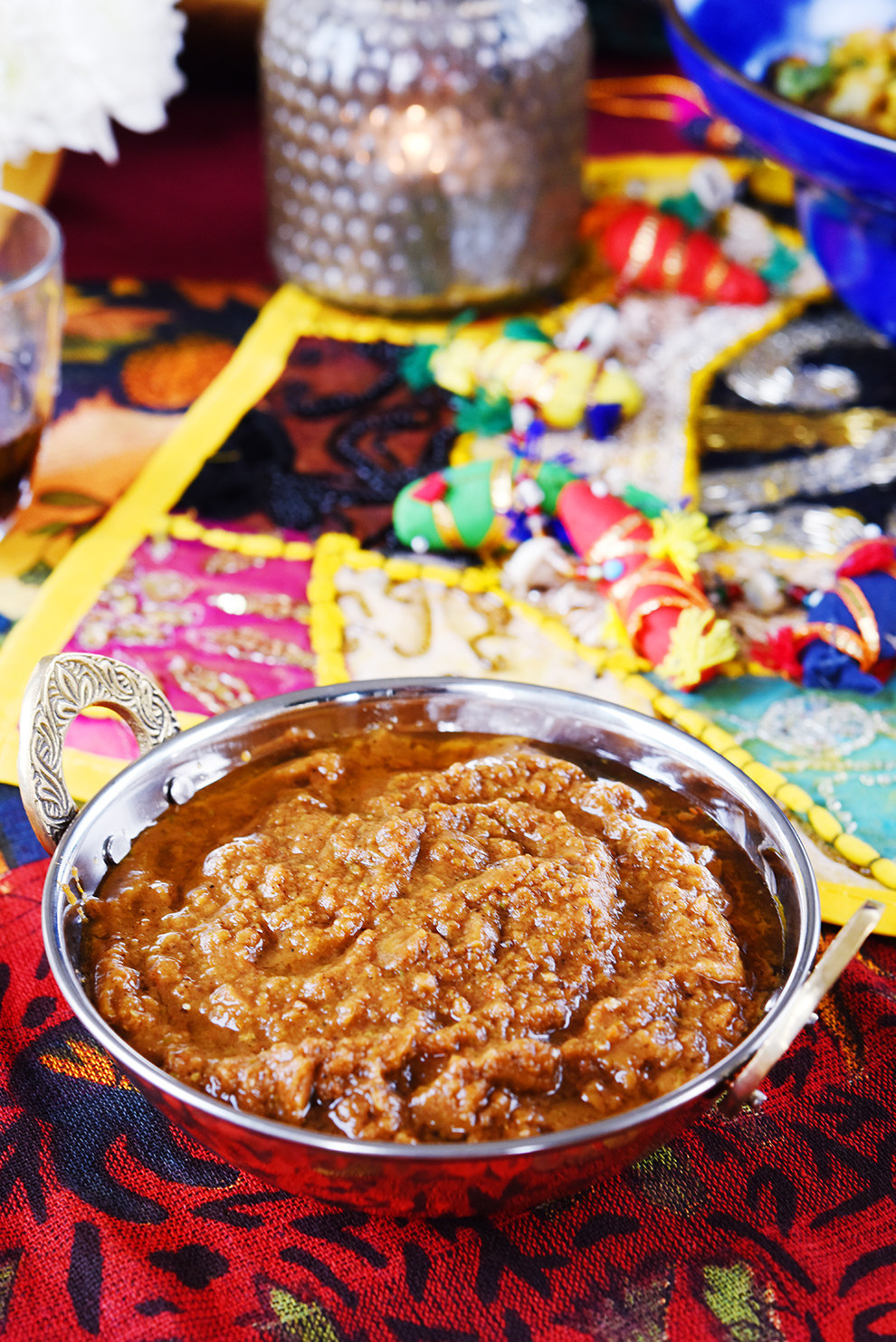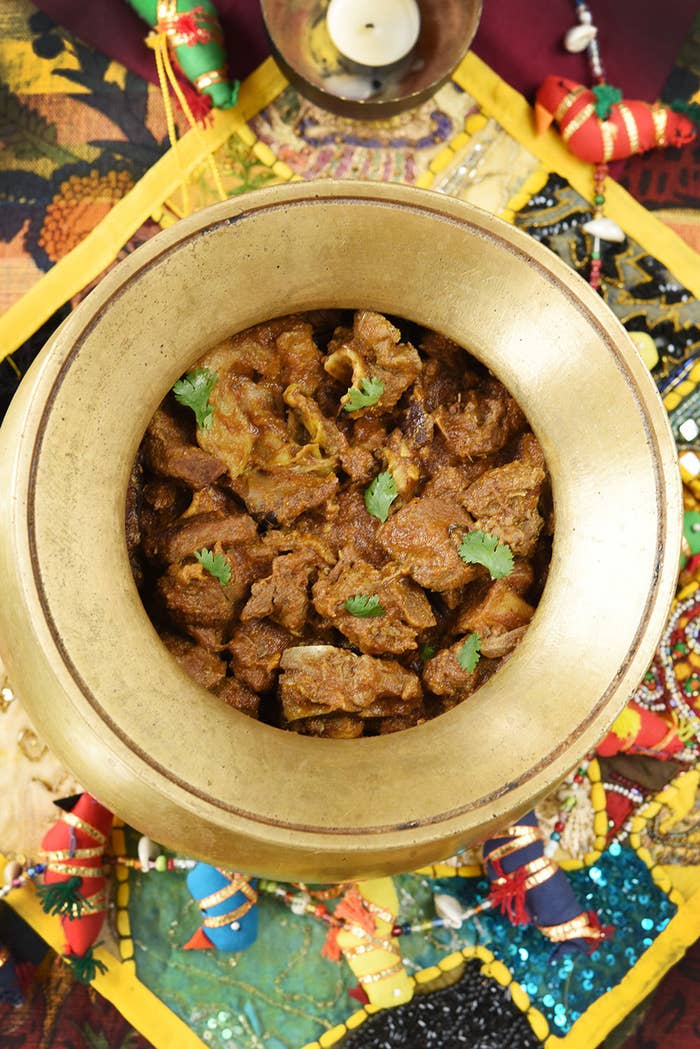
I learned to peel garlic and ginger from my mother. As a boy growing up in Nepal, I watched her in the kitchen—especially on Saturdays when we cooked an elaborate curry. She would grate ginger with a razor-sharp knife and smash garlic under her palm. Then she would pile the garlic and ginger on a silauta — a flat stone used like a mortar — add cumin and coriander seeds, and crush the mixture with a lohoro, a round stone that works like a pestle.
She didn't measure spices with tablespoons and teaspoons — everything was calculated in pinches, sprinkled from her fingers. Every ingredient that went into every dish was freshly prepared — or as they say in America, from scratch — and then cooked under low heat for hours. I learned to embrace my parents' meticulousness. It brought our whole family of four into the kitchen, each of us assigned a task.
But when I moved from Nepal to America for college in 2003, I went four years without eating a proper curry. Instead, I was introduced to all kinds of odd American culinary inventions: Daytona Beach Style Wings at Hooters, Bacon Angus ThickBurger from Hardee's, and the Corn Dog in the college cafeteria. Goat curry started to sound like the name of an English punk band, and its taste, a memory from another life.
It wasn't for lack of trying: I landed in Tennessee with a pressure cooker and big plans. Less than a week into my freshman year at Tusculum College, I fired up the pressure cooker and made my first meal with my friends: chicken curry with jarred pre-minced garlic and ginger paste and diced tomatoes from a can. The evening ended with the police at the door—a neighbor had made a noise complaint—and a mediocre curry that tasted like chicken soup boiled with a little cumin and turmeric.
After that, I would occasionally cook at a professor's home for a get-together on the final day of a class. But the spices just weren't doing it. I could never find fenugreek seeds, cumin and coriander powder lacked freshness, the paprika was an embarrassment, and the curry powder was weak. I died every single time I had to open a jar of curry paste. No matter how many times I cooked, and how many different places I bought the spices from, the food lacked something — that something that made my brother and I pop our tongues, and say "ah-haa," over the dishes our parents cooked.
I realized I was doing it all wrong. I had forgotten the lessons of my family's kitchen. I was buying supermarket, ready-made ingredients and expecting the dish to taste like home. I had forgotten the basics. I had forgotten my family's goat curry.
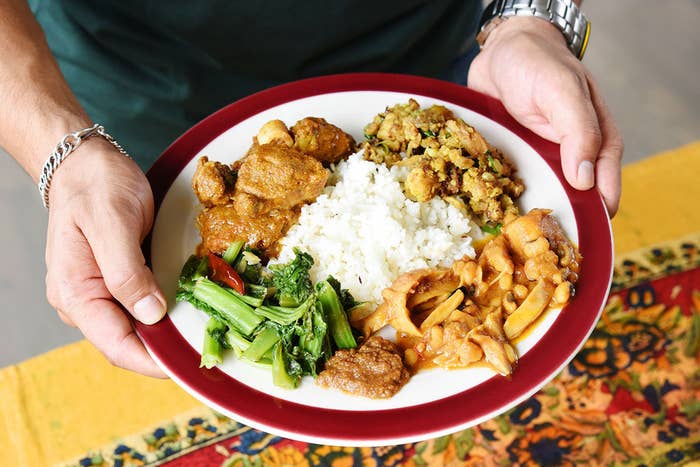
Imagine what turkey means during Thanksgiving, or a brisket during Passover — that's what goat curry meant to my family, especially during Dashain, a 10-day Hindu festival celebrating the victory of awesome gods over wicked demons. For the celebration, as many as 30 relatives always gathered at my grandfather's house in a remote village in western Nepal. It was a seven-hour ride on a rickety bus on a windy road followed by a four-hour walk through two forests, across two rivers and up a hill. But what waited there was worth the trek: A big beautiful black goat with patches of white hair and perfectly aligned horns, which my grandfather had raised for the entire year, feeding it green leaves and rice balls mushed with ghee. "We have to fatten him up," he'd say.
On the seventh day of Dashain, my grandfather butchered the goat. My father was the self-appointed chef because he knew how to prepare every single part of the animal, including testicles. My cousins and I, known to be most mischievous grandchildren, would steal smaller pieces of meat from the neck, ears and tongue and take them down to the river, where we'd start a fire in a small pile of sticks and hay, and roast the stolen bites.
Back inside the kitchen, my mother and rest of the women in the house piled up mountains of peeled garlic and ginger. Cumin and coriander seeds soaked in a tub of water, before being ground into paste on a silauta the size of doormat. My grandmother would throw in a palmful of green chiles she picked from the garden. "This is not going to be spicy at all," she would say.
Outside, my father put a giant copper pot over a wood fire. Into the pot: mustard oil, homemade dried chilies, cinnamon sticks and fenugreek seeds, and finally cubes of goat meat, from the thigh, shoulder and ribs. Then he'd stir the mixture with a giant wooden ladle twice the length of his arm, biting his tongue between his front teeth. Every half hour or so, he would taste a piece of meat from the pot and say, "This is going to be first class."
Three or four hours later, when the goat was ready, we lined up carrying plates woven from flat leaves from the trees in my grandparents' backyard. We took a scoop or two of aromatic, slow-cooked curry with a fistful of rice and a scoop of ghee.
That goat curry—the making of it, the celebration of it—summed up what it was like growing up in Nepal. Is it any wonder that jarred curry paste made me sad? If I cook Nepali food, I have to do it the Nepali way—no shortcuts.

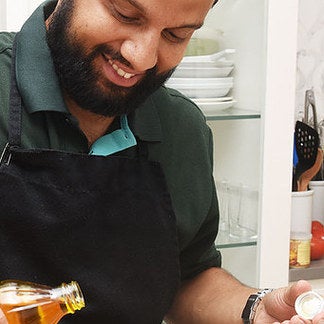

The winter before I graduated from college, I went back to Nepal for the first time since I'd come to America. When I returned, I brought with me what I really needed: big aluminum pots and spices ground by my mother, things I would never find in America. Now, whenever I go home, I return with a new kitchen tool. The last time I went, I bought a heavy brass kasaudi, which would give Le Creuset a run for its money. I even got a silauta and a lohoro to mash soaked cumin seeds and chile peppers and garlic together. Last summer, a friend asked me what I wanted for my birthday, and I asked for a cleaver because, well, the goat isn't going to chop itself.
Now when I come home to my kitchen after a long day of work, I shut off my phone and put on an apron. I dim the lights, put on some Nepali music, and then set my kasaudi on the stove. I think about how my father would do it, step by step, and then I pour in the mustard oil, then the fenugreek seeds and whole cinnamon sticks. I then toast the cumin and coriander seeds separately in a hot pan and then smash them on the silauta together with green chiles and garlic. I pinch and sprinkle the turmeric, salt, and asafoetida between my fingers. Three hours later, I sit at the table with my goat curry and rice. Everything is perfect.
THE MENU: A COOK-LIKE-YOU-MEAN-IT NEPALI FEAST
